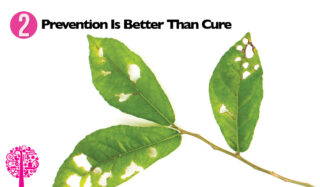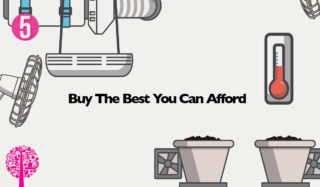I have been growing indoors for many years. Like all growers, I have encountered many mistakes and problems. However, these have only made me a better gardener in the long run. I could share countless tips, but these five will likely impact your growing game best.
Keep a Grow Diary

There are many ways to keep notes! Write them on a pad, log them on your phone, or use a wall chart. Just make sure you do it! I cannot stress enough how much being able to track my cultivation history has helped me learn and succeed as a grower.
Writing down a brief list of everything you do and when you do it will help you spot mistakes, successes, and growth patterns. Before long, you will have a tried and tested foundation of knowledge upon which to build.
Prevention Is Better Than Cure

Indoor grow rooms are ideal places for insects to thrive. They love the hot, humid climate and the abundance of tasty plants. An infestation of bugs like aphids, spider mites, and thrip can be devastating. Pest infestations often snowball quickly; the reproduction rate is remarkably high, especially in warm conditions. For example, a female aphid can produce up to 12 offspring a day, which will reach adulthood and start reproducing themselves after only a week!
Using my three-day pest checklist religiously means you will spot the signs of any infestation while still having a chance to control and eradicate it. It will also remind you to ensure the environment is suitable for your plants and not in a zone attractive to insects.
Three-day Checklist

- Examine leaves from a sample of plants for signs of insect damage, including bugs, residue, tracks, holes, or eggs.
- Remove any dead, dying, or damaged leaves.
- Turn each plant 90 ̊ to distribute light and airflow evenly.
- Maintain good housekeeping and hygiene standards.
- Check that temperature and humidity levels are correct.
Reservoir Recommendation

When using a system with a tank or reservoir to feed plants, you should change it completely every seven days, regardless of the nutrients used. Plants do not consume nutrients and water equally. Therefore, the nutrient strength in the hydroponic reservoir will fluctuate. Do not just top up the feed! If you do and then take the EC measurement, and it comes out correct, it does not mean that what is in the tank is what your plants need. The EC reading only tells you the level of salts present in the water. It cannot tell you the levels of individual elements. Nutrients can also start to dissolve or calcify after a few days, changing the properties of your nutrient solution.
You will replenish your plants with fresh, accurately dosed feed in a clean environment by fully draining and cleaning your tank every seven days. It will prevent any problems before they start. Regular cleaning also helps prevent water from stagnating and developing fungi and bacteria.
Keep Your Grow Room Clean

Think of the grow room as a restaurant kitchen. It’s your workroom and place of creation. Suppose it is clean, sanitary, and well-organized. In that case, you can get much more out of it at a better quality rate than messy, cluttered, and unclean.
Inadequate hygiene standards increase the chances of a pest infestation or an attack of mold or mildew. Space also equals safety in a grow room; the combination of running electricity, hot lights, and water could quickly become a recipe for disaster.
So, ensure the cables are tidy and not covered and that everything is appropriately spaced. As a result, your plants will be happier and healthier, and you will find a more desirable working environment produces better results.
Buy The Best You Can Afford

Money talks, and never is this more accurate than in indoor gardening. When it comes to equipment, 99% of the time, you get what you pay for. This does not mean that you must buy the top range but certainly do not buy the cheapest. Cheap nutrients will be full of cheap industrial-grade elements, and inexpensive lights won’t give you the actual outputs of PAR or PPFD. Unfortunately, there are too many unscrupulous firms out there that are only concerned with making money.
The more technology and quality equipment in your grow room, such as fan speed controllers or LED lights, the easier and more manageable you will find things and the better results.
Buying quality also ensures your safety and peace of mind with warranties, guarantees, and customer service. Budget brands are okay for amateur small grow projects. But they are not generally reliable enough for anything more significant or long-term. They will often cost you more in lost yields and other problems. So buy quality and get it right the first time.